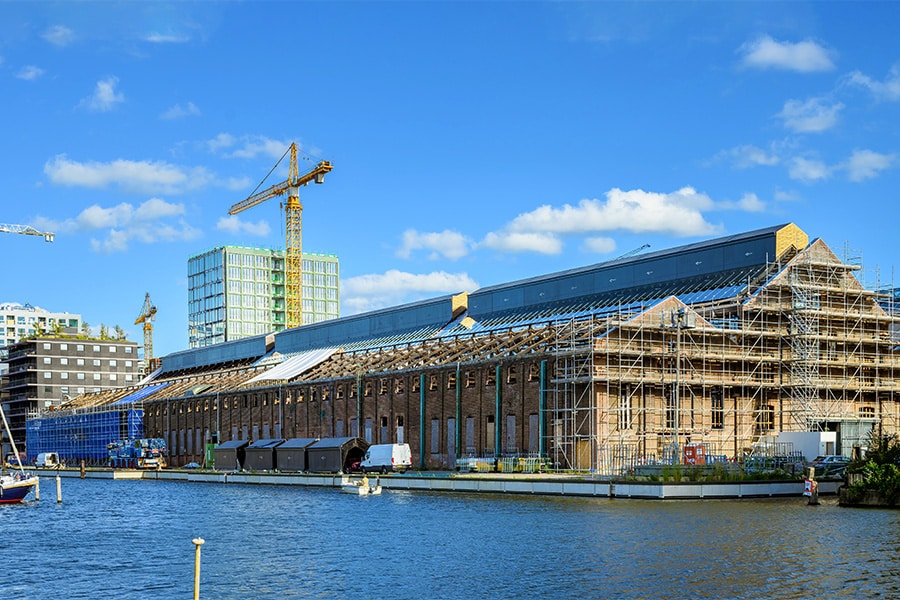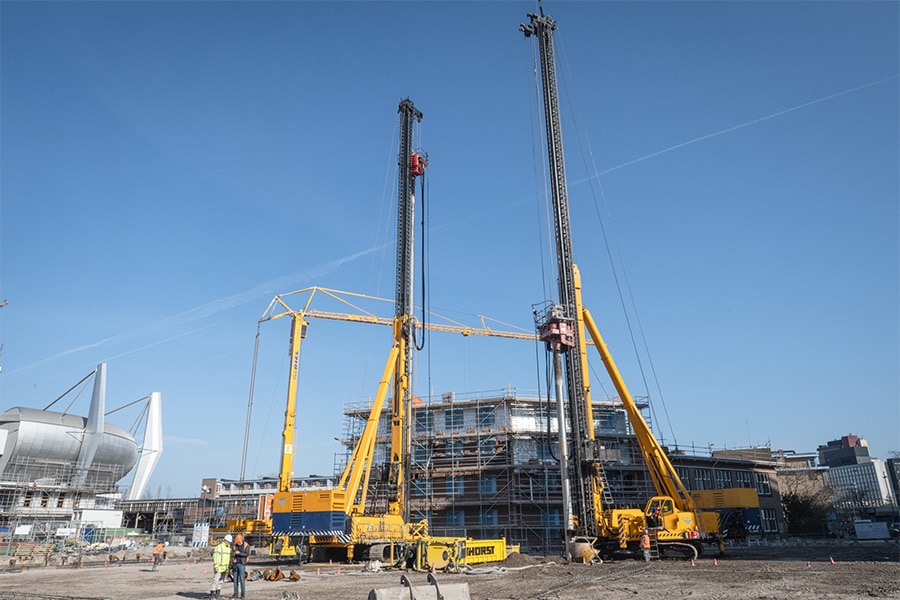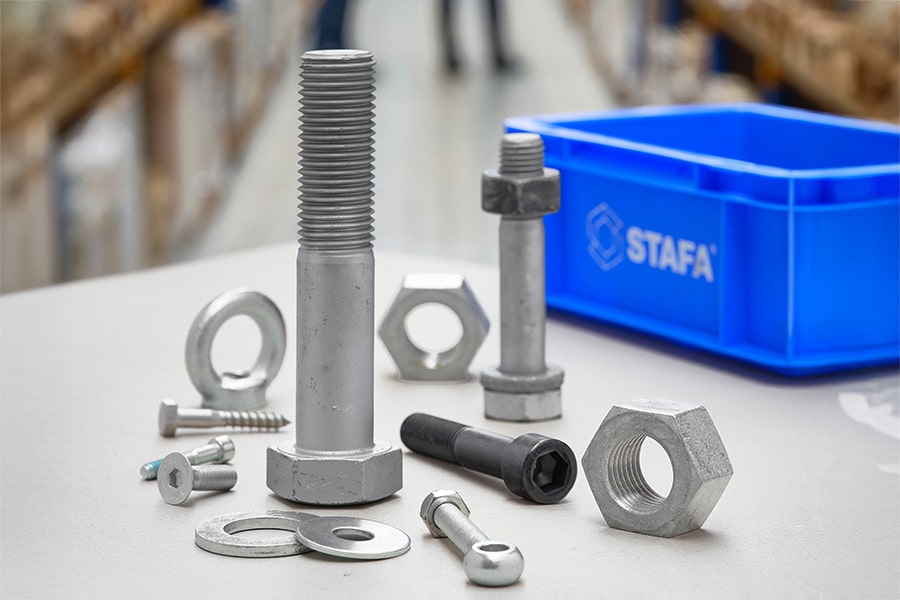
Innovative sensor technology for the foundation industry
The introduction of the Eurocodes in the Netherlands in general and the ongoing discussion on pile class factors in particular, are reasons why in situ testing of foundation piles has become more common in recent years. Brem Funderingsexpertise B.V. from Gouda is, among other things, specialized in performing various investigations that can demonstrate the quality of concrete piles. Think of acoustic pile inspection, Crosshole Sonic Logging, concrete strength research and test loads on tension and pressure. The latter can be performed dynamically, pseudo-statically and statically.
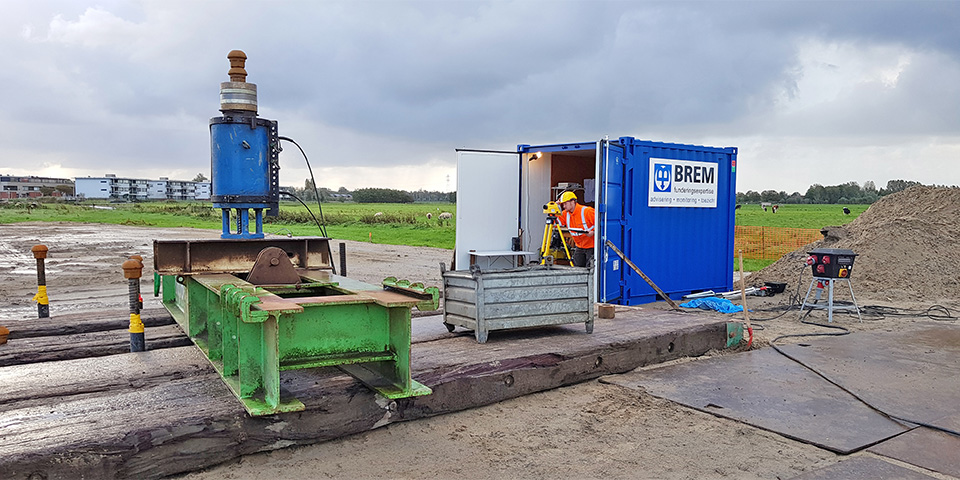
Pile test load on tensile.
The latest technique applied in this area by Brem involves the use of optical strain sensors that can very accurately measure the strain in foundation piles. This allows, much better than traditional measurement techniques, the degree of friction along the pile shaft to be mapped. This gives a very good picture of what part of the pile load bearing capacity is provided by the shaft friction (and at what depth what percentage of that) and what part is provided by the point load bearing capacity (in the case of piles loaded under compression). In the case of piles loaded under tension, it can be determined at an early stage how long any grout body needs to be in order to meet the required tensile bearing capacity.
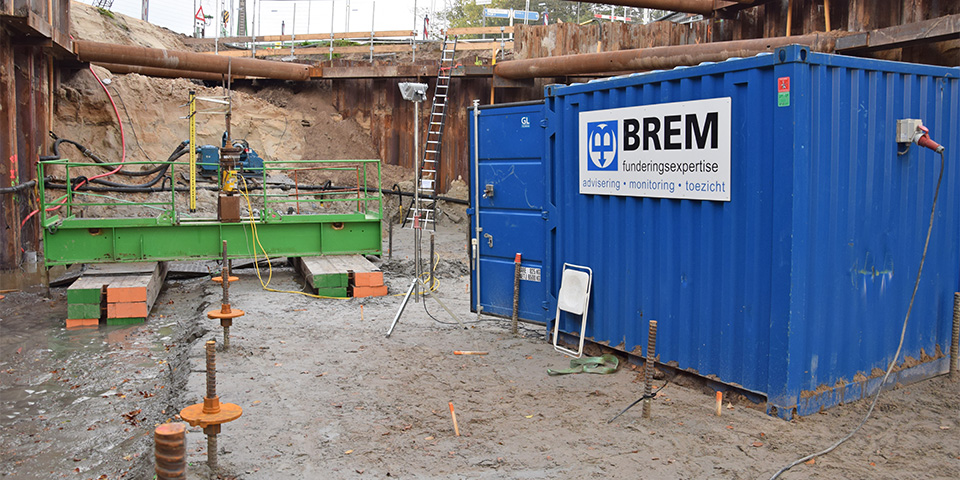
Tensile test on anchor pile from excavated construction pit.
Potential
Application of this technique has great potential, according to Erik de Bruin, manager of special projects at Brem, and also provides additional possibilities for collecting interesting information regarding practical data on pile foundations. "By applying this type of sensors, not only can information be gathered about the behavior of the pile during the pile tests, it is also possible to monitor the quality of the concrete during its curing." With the same sensor string used for accurate strain measurements, De Bruin says the temperature development in the pile can also be monitored very accurately. This is a parameter that gives an indication of the homogeneity of the concrete pile shaft in in-situ concrete piles. In addition, it is an option to monitor the actual force mobilization in the pile during the realization of the building built on those piles. As an ultimate use of the same sensor string, it is even possible to demonstrate exactly what effect wind loads on high-rise buildings have on an individual foundation pile. "That is certainly a study in which high-rise structural engineers will be very interested," De Bruin said.
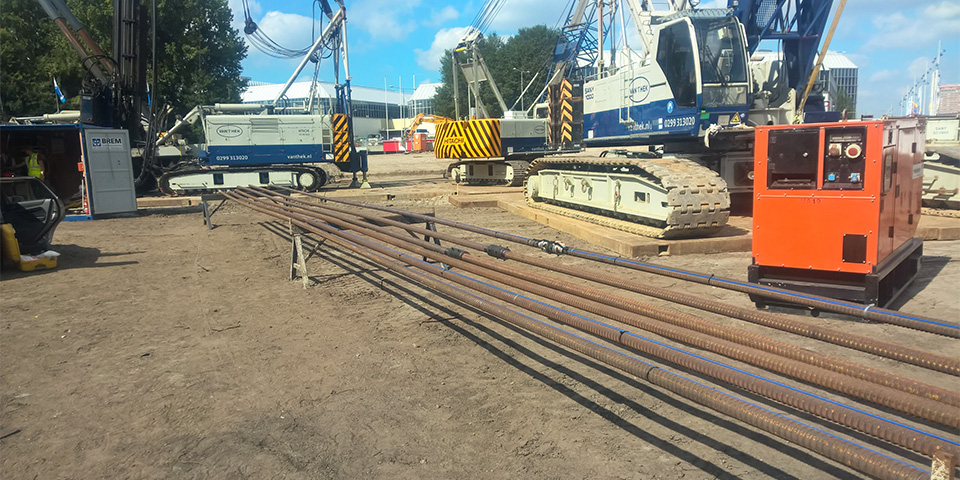
Prepared anchor rods.
Applications
Brem has now gained considerable experience in applying this innovative sensor technology in the foundation industry. This development has meant that the company is now also active with various monitoring jobs in industries outside its original field of work. These include extensive monitoring jobs in the area of Structural Health Monitoring, Weigh in Motion systems at bridges and viaducts and even leak detection at sewer systems. "The monitoring principle is often the same, but by clever positioning of the sensors, many things can be monitored that were previously difficult or even impossible to measure," says De Bruin. "People sometimes ask for monitoring activities of a certain type because they are familiar with it. While that actually measures a derivative of what they actually want to know. With this new sensor technology, it becomes possible to measure the parameter of interest itself. So there is still some missionary work to be done, but we are happy to do it."
